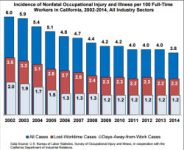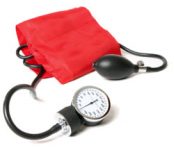Category: Injuries and Illness
Modern safety management goes beyond covering traditional workplace accidents to now being equally concerned with illnesses caused on and even off the job. This section will explain what you need to know to avoid both injuries and illnesses, and to track your progress in reaching this goal.
While OSHA’s annual list of top 10 violations typically focuses on issues like hazard communication, lockout/tagout, and machine guarding, many other serious risks sideline employees and cost employers money. Keep reading for another perspective on industrial hazards.
What’s the key to reducing the number of injuries that plague nurses and other healthcare workers? Get the view of one organization and find out what they’re doing to bring it about.
California’s occupational injury and illness rate is the lowest it’s been in 13 years. Keep reading to find out what’s going right in the Golden State.
Employees of a New Hampshire retirement community are just saying no to musculoskeletal injuries. Keep reading to learn more about a training program that leaves no one behind.
OSHA requires you to investigate accidents that cause injury, but having an effective accident investigation process makes good business sense, too. Taking steps to prevent recurrence of an injury can increase production, reduce missed work days, and decrease workers’ compensation insurance costs. In this webinar, Fran Sehn, a risk management expert, will tell you everything […]
Workplace fatalities may be up nationwide, but California’s Department of Industrial Relations (DIR) released preliminary statistics for the state that show a 16 percent decline in workplace deaths from 2013 to 2014. While DIR Director Christine Baker called the downward trend encouraging, she emphasized the need for employers to continue their commitment to workplace safety. […]
The latest fatality statistics from the Bureau of Labor Statistics (BLS) are out. Read the article to find out what sectors are seeing an increase in workplace deaths.
Some workers must stand for prolonged periods and may not be free to move around—like doctors and nurses in an operating room or cashiers at a retail store. Others sit for prolonged periods, like office workers or factory workers who stay at a single workstation for their entire shift. Neither is optimal for human health. […]
It’s been all over the news in recent years: Americans sit too much, and it’s killing us. We sit in our cars, we sit at the office, and we sit in front of our computers, television screens, video games, tablets, and phones—and while we’re sitting, our metabolisms are changing. Our waists are getting bigger, our […]









